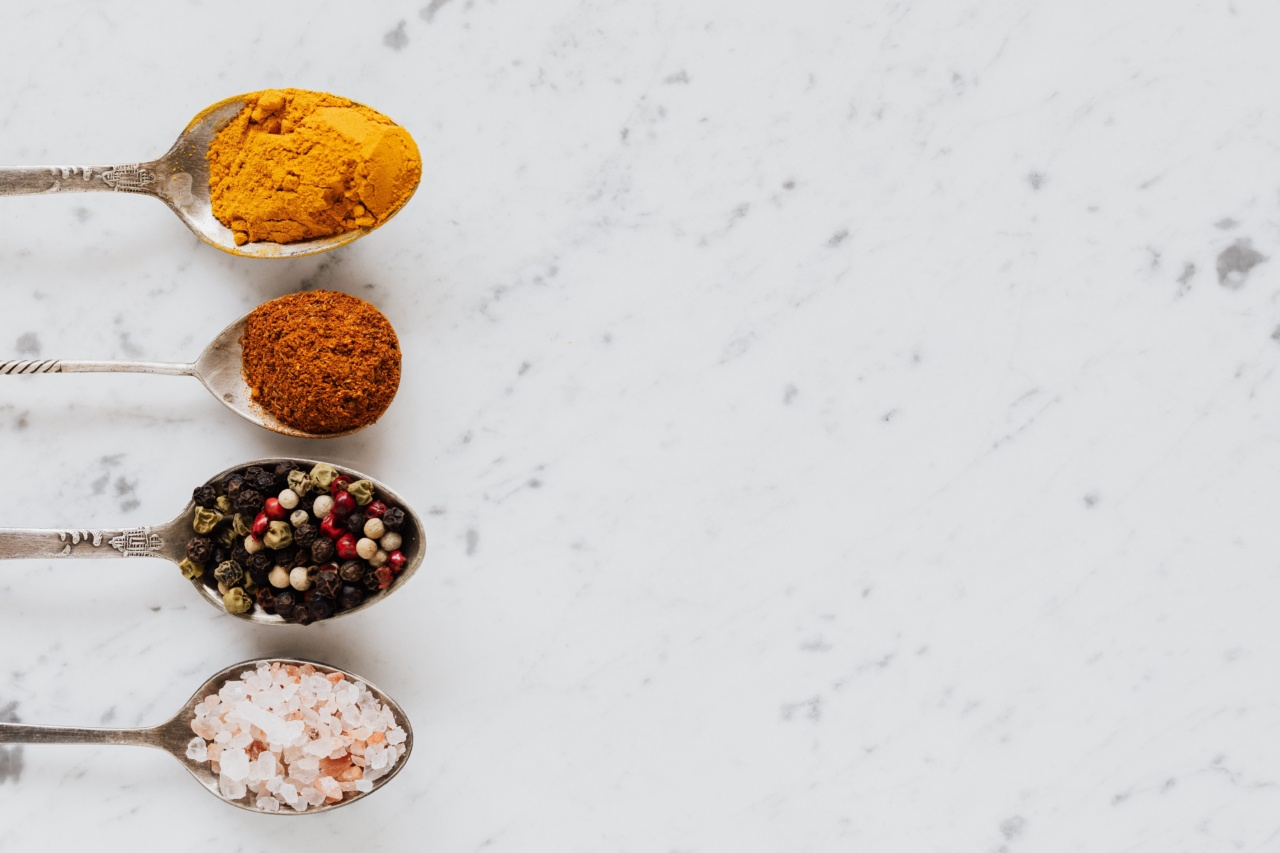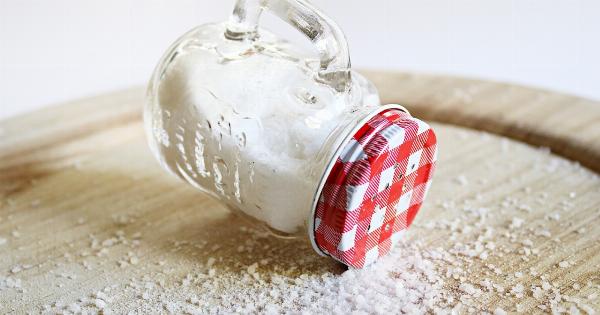Salt is a common ingredient in most dishes, but did you know that it can be found in surprising amounts in many everyday food items? Consuming too much salt can lead to various health problems like high blood pressure, heart disease, and stroke.
Hence it is crucial to monitor your salt intake and be aware of the hidden salt content in various foods. Here is a list of 30 foods that are loaded with hidden salt.
1. Canned Vegetables
Canned vegetables are often preserved in saltwater or brine, resulting in high sodium content. One cup of canned peas has about 350 milligrams of sodium. Switching to fresh or frozen produce can reduce your salt intake significantly.
2. Salad Dressing
Many salad dressings have added salt and sodium. A tablespoon of Italian salad dressing packs around 290 milligrams of sodium. Opting for homemade dressings can help you monitor your salt intake.
3. Bread
While bread is an everyday staple, it has hidden salt. A slice of white bread can have up to 200 milligrams of sodium. Choosing whole-grain bread with no added salt can be a healthier alternative.
4. Cheese
Cheese is not only high in fat but also sodium. An ounce of cheddar cheese has around 175 milligrams of sodium. Opting for low-sodium cheese can help you enjoy your favorite snack without compromising your health.
5. Soup
Canned soups can pack a punch in sodium. A single cup of chicken noodle soup can contain up to 800 milligrams of sodium. Choosing soups with low-sodium content or making your own soup using fresh ingredients can be a healthier alternative.
6. Pizza
Pizza may be a delicious treat, but it can also be high in sodium. A slice of plain cheese pizza can contain up to 600 milligrams of sodium. Choosing toppings with lower salt content can help reduce your intake.
7. Processed Meats
Processed meats like sausages, bacon, and ham contain preservatives and salt for flavor and preservation. Two slices of bacon can have around 90 milligrams of sodium. Choosing fresh meats or those with lower sodium content can be a healthier alternative.
8. Frozen Dinners
Frozen dinners can have high sodium content for preservation and flavor. A typical frozen dinner can contain up to 700 milligrams of sodium. Opting for low-sodium or homemade frozen dinners can help reduce your salt intake.
9. Pickles
Pickles are preserved using saltwater, leading to high sodium content. A single dill pickle can contain up to 300 milligrams of sodium. Choosing fresh pickles or those with reduced salt content can be a healthier option.
10. Chips
Chips are a common snack loved by people worldwide. However, they have high sodium content. A small packet of potato chips can contain up to 200 milligrams of sodium.
Choosing chips with reduced salt content or healthier snacks can help reduce your salt intake.
11. Ketchup
Ketchup is a condiment used to add flavor to food. However, it is also high in sodium. A tablespoon of ketchup can contain up to 190 milligrams of sodium. Opting for low-sodium ketchup can help reduce your salt intake.
12. Crackers
Crackers are a popular snack, but they also can be high in sodium. A serving of saltine crackers can have around 200 milligrams of sodium. Choosing whole-grain crackers with no added salt can be a healthier alternative.
13. Bottled Lemon Juice
Bottled lemon juice is a common ingredient used in cooking and drinks. However, it is also high in sodium. A tablespoon of bottled lemon juice can contain up to 240 milligrams of sodium. Opting for fresh lemons can be a healthier alternative.
14. Cottage Cheese
Cottage cheese is a low-fat dairy product that is often used in salads and recipes. However, it also contains sodium. A cup of cottage cheese can contain up to 500 milligrams of sodium.
Choosing low-sodium cheese or other low-sodium dairy products can help reduce your salt intake.
15. Soy Sauce
Soy sauce is a staple ingredient used in Asian cuisine. However, it can be high in sodium. Just a tablespoon of soy sauce can contain up to 1000 milligrams of sodium.
Opting for low-sodium soy sauce or using it in moderation can help reduce your salt intake.
16. Cereals
Cereals are a go-to breakfast option but are often high in salt. A serving of cereal can contain up to 200 milligrams of sodium. Choosing low-sodium cereals can help reduce your salt intake.
17. Olives
Olives are a popular snack and ingredient used in cooking. However, they also contain salt. Five medium-sized olives can have up to 150 milligrams of sodium. Choosing fresh olives or those with reduced salt content can be a healthier choice.
18. Tomato Products
Tomato products like tomato sauce and tomato paste often have high sodium content. Half a cup of tomato sauce can have around 500 milligrams of sodium. Using fresh tomatoes or low-sodium tomato products can be a healthier alternative.
19. Frozen Vegetables with Sauce
Frozen vegetables with added sauce can have high sodium content. A serving of mixed vegetables with sauce can contain up to 400 milligrams of sodium. Choosing plain frozen vegetables or those with low-sodium content can help reduce your salt intake.
20. Vegetable Juices
Vegetable juices can be a healthy alternative to sugary drinks. However, they also contain sodium. A cup of vegetable juice can contain up to 480 milligrams of sodium.
Choosing low-sodium vegetable juices or making your juice at home can be a healthier option.
21. Mustard
Mustard is a condiment that adds flavor to food. However, it can also contain high sodium content. A tablespoon of mustard can contain around 120 milligrams of sodium.
Opting for low-sodium mustard or using it in moderation can help reduce your salt intake.
22. Packaged Snacks
Packaged snacks like pretzels and trail mixes are often high in sodium. A serving of pretzels can contain up to 300 milligrams of sodium. Choosing low-sodium snacks or making your own snacks at home can help reduce your salt intake.
23. Fast Foods
Fast foods like burgers and fries are often high in sodium. A typical hamburger can contain up to 690 milligrams of sodium, while a serving of fries can contain up to 270 milligrams of sodium.
Choosing healthier fast food options or cooking at home can help reduce your salt intake.
24. Flavored Yogurt
Flavored yogurts often contain added sugar and salt for flavor. A serving of flavored yogurt can contain up to 150 milligrams of sodium. Choosing plain yogurt and adding fresh fruit can be a healthier alternative.
25. Energy Drinks
Energy drinks are a popular option for a quick energy boost. However, they also contain a high amount of sodium. A single serving of an energy drink can contain up to 200 milligrams of sodium.
Opting for natural energy-boosting options or low-sodium energy drinks can help reduce your salt intake.
26. Teriyaki Sauce
Teriyaki sauce is a popular addition to Asian dishes. However, it is high in sodium. A tablespoon of teriyaki sauce can contain up to 700 milligrams of sodium. Choosing low-sodium teriyaki sauce or using it in moderation can help reduce your salt intake.
27. Baked Goods
Baked goods like cookies and cakes can be high in sugar and sodium. A single serving of a cookie can contain up to 100 milligrams of sodium. Choosing low-sodium baked goods or making your own snacks at home can help reduce your salt intake.
28. Tinned Fish
Tinned fish like salmon and tuna often contain added salt for preservation. A can of tuna can contain up to 300 milligrams of sodium. Choosing fresh fish or those packed in water can be a healthier option.
29. Instant Noodles
Instant noodles are a popular snack and easy to make. However, they are also high in sodium. A single serving of instant noodles can contain up to 885 milligrams of sodium.
Choosing low-sodium options or making your noodles at home can help reduce your salt intake.
30. Powdered Soup Mixes
Powdered soup mixes are a convenient option but are often high in sodium. A single serving of a powdered soup mix can contain up to 800 milligrams of sodium. Choosing low-sodium soup mixes or making your own soups at home can be a healthier alternative.
Conclusion
In conclusion, salt is a common ingredient hidden in various foods. Consuming too much salt can lead to serious health problems. Hence it is crucial to be aware of the hidden salt content in various food items and make healthier choices.
Choosing fresh, whole foods and avoiding processed foods can help reduce your salt intake and improve your overall health.
























